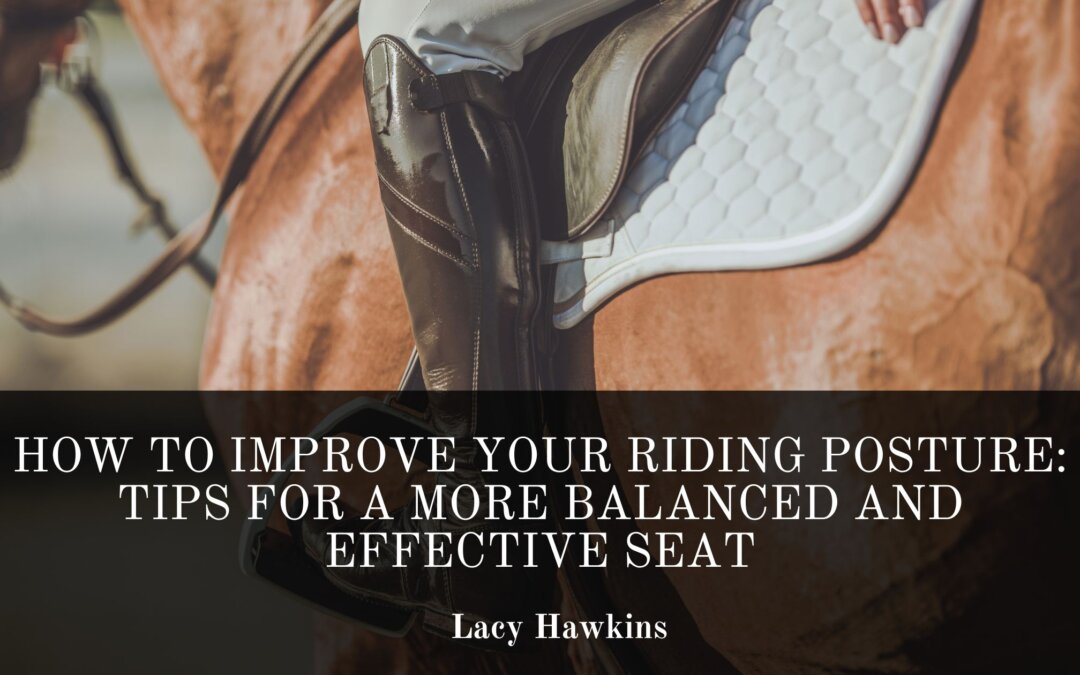Maintaining proper horseback riding posture is essential for both the rider and the horse. A well-balanced seat allows you to communicate more effectively with your horse, enhances your stability, and prevents discomfort or injury. Whether you’re a beginner or an experienced equestrian, refining your riding posture can significantly improve your performance. Here are some key tips to help you develop a balanced and effective seat.
1. Start with Proper Alignment
A strong riding posture begins with correct body alignment. Imagine a straight line running from your ear, through your shoulder, hip, and down to your heel. This alignment helps distribute your weight evenly, ensuring a balanced position in the saddle. Sitting too far forward or backward can disrupt your horse’s movement and cause instability.
2. Engage Your Core
Your core muscles play a crucial role in maintaining good posture. A strong core stabilizes your body and prevents excessive movement that could confuse or unbalance your horse. Engage your abdominal muscles to support your spine while keeping your movements fluid and controlled. Simple exercises like planks and leg lifts can strengthen your core and improve your riding stability.
3. Relax Your Shoulders and Arms
Tension in the shoulders and arms can lead to stiffness and ineffective communication with your horse. Keep your shoulders back and relaxed, allowing your arms to move naturally. Your elbows should stay close to your body, creating a soft and steady connection with the reins. Overly stiff arms can result in a harsh rein contact, while excessively loose arms may cause inconsistency in your cues.
4. Keep a Soft and Balanced Seat
Your seat is the foundation of your riding posture. Avoid gripping too tightly with your thighs, as this can make you bounce in the saddle and restrict your horse’s movement. Instead, focus on sitting deeply and evenly in the saddle, allowing your hips to move naturally with your horse’s motion. Practicing riding without stirrups can help develop a more secure and independent seat.
5. Maintain Proper Leg Position
Your legs should rest gently against your horse’s sides without excessive pressure. The stirrups should support the ball of your foot, with your heels slightly down. Pressing too hard with your heels can create unnecessary tension, while pointing your toes outward can disrupt your alignment. Developing a relaxed yet firm leg position allows you to give precise aids without interfering with your horse’s movement.
6. Look Where You’re Going
Your head position affects your overall balance and posture. Keep your eyes focused on the direction you’re riding, rather than looking down at your horse. This helps maintain a strong upper body position and improves your ability to anticipate changes in movement. Looking down can cause you to slump forward, throwing off your alignment.
7. Practice Off the Horse
Improving your riding posture doesn’t have to happen only in the saddle. Strengthening exercises like yoga, Pilates, and balance drills can enhance your flexibility and coordination. Stretching regularly can also help prevent stiffness and improve your range of motion, making it easier to maintain proper riding form.
Final Thoughts
Developing a balanced and effective riding posture takes time and practice, but the benefits are well worth the effort. You’ll create a more harmonious connection with your horse by focusing on alignment, core engagement, relaxation, and consistency. Whether in training or competition, a strong posture will improve your riding experience and help you become a more confident and skilled equestrian.
